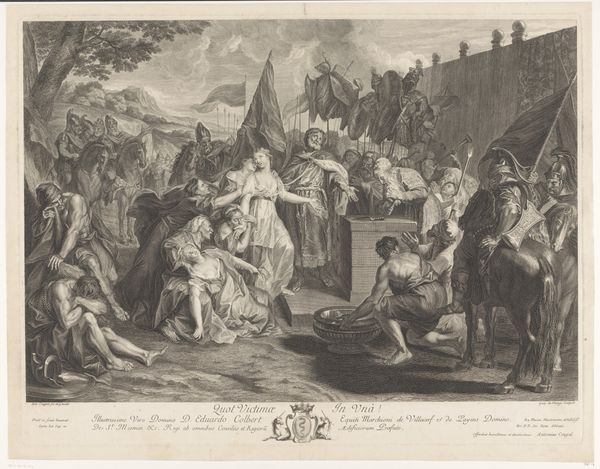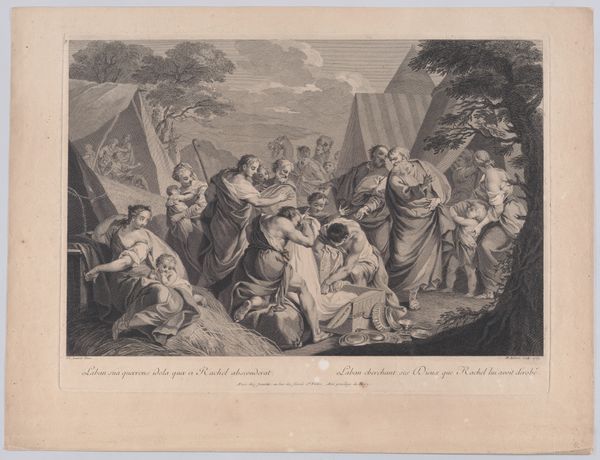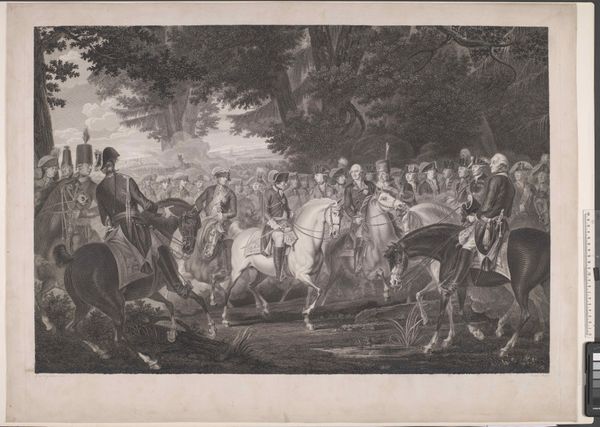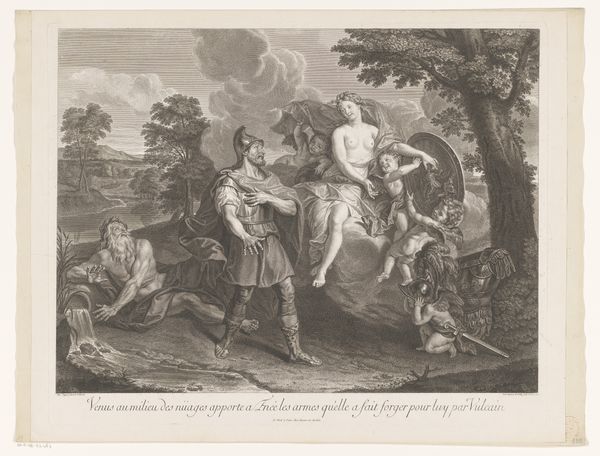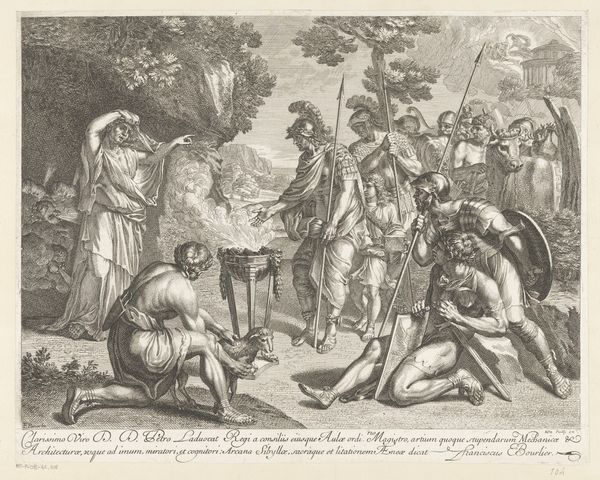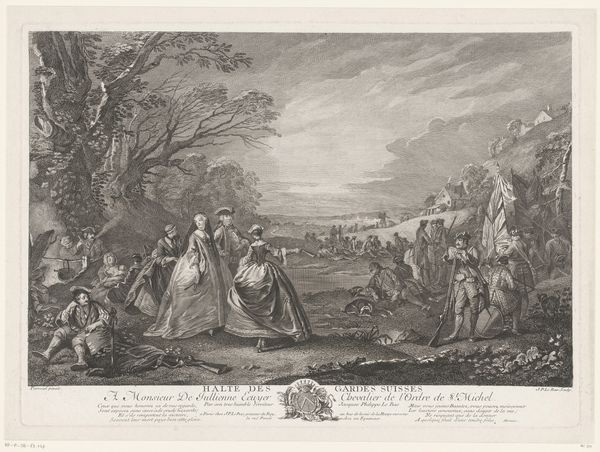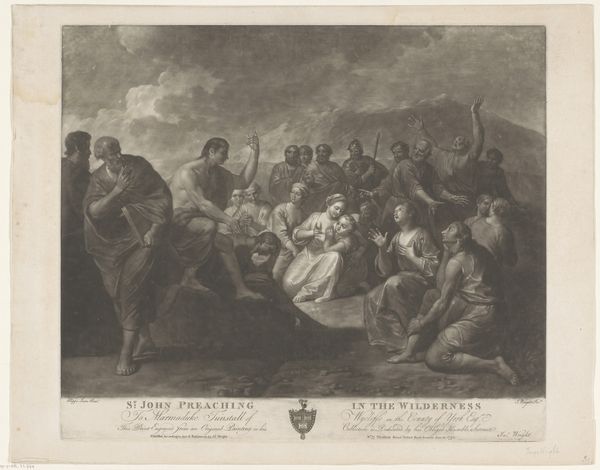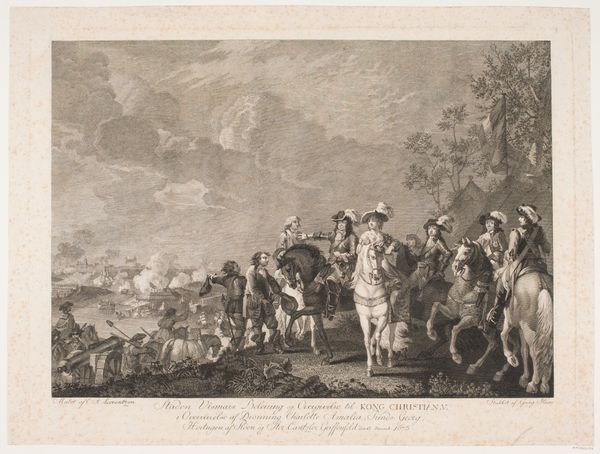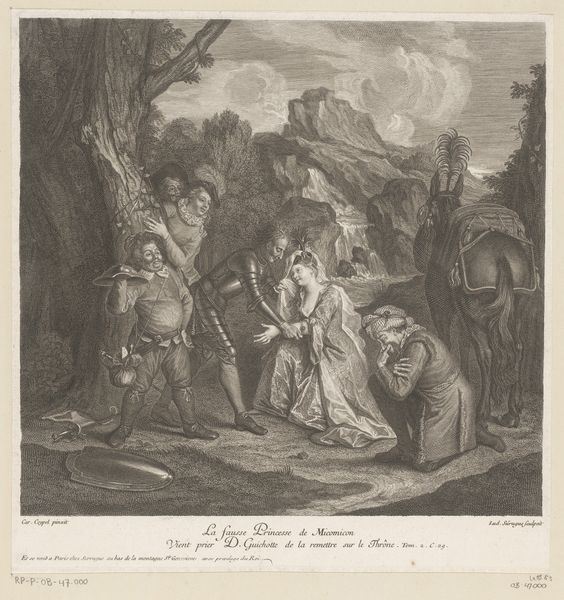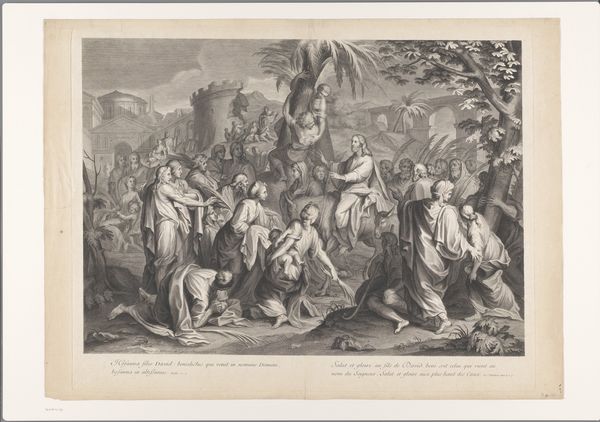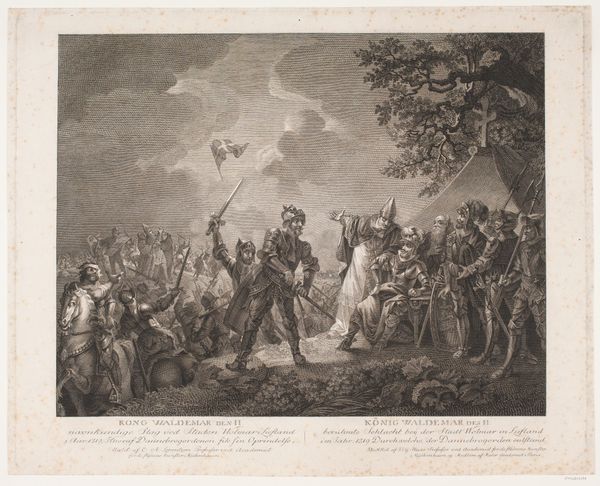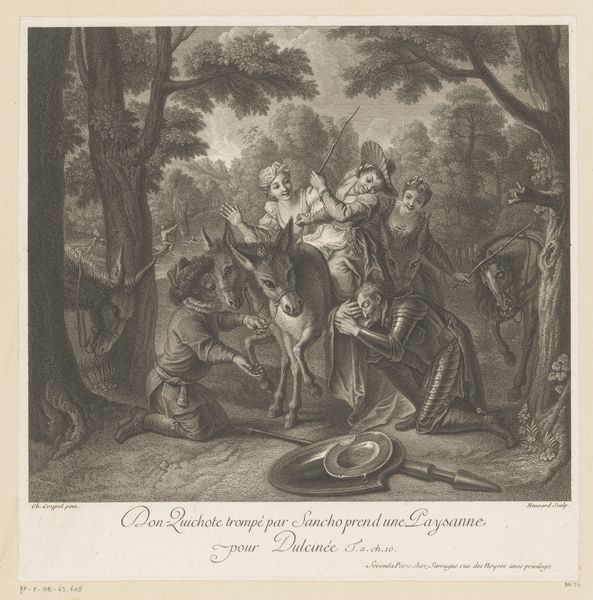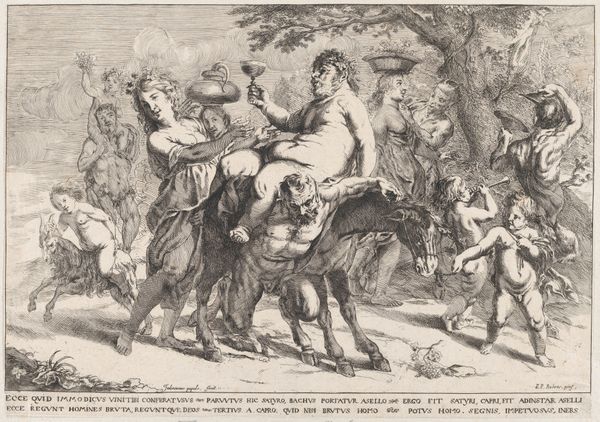
drawing, print, engraving
#
drawing
#
narrative-art
#
baroque
# print
#
old engraving style
#
landscape
#
figuration
#
history-painting
#
engraving
Dimensions: Sheet: 18 1/8 × 23 5/8 in. (46 × 60 cm) Plate: 14 9/16 × 19 11/16 in. (37 × 50 cm)
Copyright: Public Domain
Curator: This engraving, "Jacob and Esau, after Etienne Jeaurat" from 1744, captures a pivotal moment in the brothers' story. Look at the posture, the faces – it speaks volumes, doesn't it? Editor: It does. The scene is incredibly detailed, but I'm especially struck by the stark contrast between the figures on either side. The group on the left look ready for battle, while the women and children to the right of the embrace seem much more vulnerable. What do you make of that contrast? Curator: That juxtaposition is key. It highlights the layers of meaning within the image. Notice the Roman-esque figures on the left – Jacob's people armed, conveying a possible narrative of betrayal and conflict from the brother Esau and his armies.. Then you see the other half with all women and children. Editor: Yes, a sense of family and community. So what could all of that mean in the broader scope? Curator: Well, let's think about brotherhood and family. The embrace is front and center - consider what kind of familial and social relationships they depict? Notice how both men weep. Perhaps forgiveness, reconciliation. Think about how such displays of affection were perceived back then in 1744 when there was no TV and limited printing - emotional expression like that becomes the emotional technology of it's age to express deep psychological motifs about family values. The symbols within carry layers of meaning beyond the immediate narrative. What would you conclude about Jeaurat's artistic legacy of the era, when people see these displays, for their inner feelings? Editor: I see. This really sheds new light on how loaded imagery is, communicating deep-seated beliefs of how society functions. It is very useful. Curator: Exactly! Art then becomes more than just art - it becomes part of a cultural memory.
Comments
No comments
Be the first to comment and join the conversation on the ultimate creative platform.
